Learn the PLC wiring questions for technicians and engineers to understand programmable logic controllers and electrical schematics.
PLC Wiring
The PLC wiring video provides detailed explanations for the given questions.
Question 1
What is the purpose of a control relay in PLC wiring?
A. To convert AC to DC
B. To control the sensor signals
C. To amplify the signal
D. To isolate the PLC from high voltage circuits
Show the Answer
To isolate the PLC from high voltage circuits
Question 2
Which wire color is typically used for grounding in PLC systems?
A. Black
B. Blue
C. Green
D. Red
Show the Answer
Green
Question 3
What does a “normally open” (NO) contact mean in PLC wiring?
A. The circuit is open by default
B. The circuit is closed by default
C. The circuit always allows current to flow
D. The circuit allows current only when energized
Show the Answer
The circuit is open by default
Question 4
Why is it important to maintain separation between power and signal wiring in a PLC?
A. To reduce wiring costs
B. To ensure proper grounding
C. To prevent voltage drop
D. To minimize electrical noise interference
Show the Answer
To minimize electrical noise interference
Question 5
What is the purpose of using terminal blocks in PLC wiring?
A. To prevent wire short circuits
B. To reduce the length of wiring
C. To provide a common point for wire connections
D. To increase signal speed
Show the Answer
To provide a common point for wire connections
Question 6
What is the recommended practice for routing PLC wires through a panel?
A. Run power and signal wires together
B. Cross power and signal wires at 90-degree angles
C. Avoid using wire ducts to allow airflow
D. Use the shortest path, regardless of separation
Show the Answer
Cross power and signal wires at 90-degree angles
Question 7
Why should wire insulation ratings be considered in PLC wiring?
A. To ensure wires fit within conduits
B. To match the voltage and temperature ratings
C. To minimize installation costs
D. To prevent overloading of the PLC system
Show the Answer
To match the voltage and temperature ratings
Question 8
When wiring a thermocouple to a PLC, what must be considered for correct installation?
A. Keep wires untwisted
B. Use ordinary copper wires
C. Maintain proper polarity (positive and negative)
D. Avoid using shielded cables
Show the Answer
Maintain proper polarity (positive and negative)
Question 9
How should shielded cables be connected when wiring instruments to a PLC?
A. Connect both ends of the shield to ground
B. Ground the shield only at one end
C. Leave the shield unconnected
D. Ground the shield at both ends
Show the Answer
Ground the shield only at one end
Question 10
When wiring a 4-20mA current loop instrument to a PLC, what is crucial for correct wiring?
A. Keep the loop wire as long as possible
B. Ensure the loop is closed
C. Use a untwisted pair cable
D. Use a 10-ohm resistor in series
Show the Answer
Ensure the loop is closed
Question 11
What should be the approach when wiring multiple instruments to a PLC input module?
A. Daisy chain the instruments in series
B. Use separate channels for each instrument
C. Connect all instruments to a common ground
D. Connect all instruments in parallel
Show the Answer
Use separate channels for each instrument
Question 12
How should analog and digital wires be managed in a PLC panel to avoid interference?
A. Run them in the same conduit
B. Keep them in separate, shielded conduits
C. Connect them to the same ground point
D. Cross them at 45-degree angles
Show the Answer
Keep them in separate, shielded conduits
Question 13
What is the best practice for wiring a PLC input module with dry contacts?
A. Use a separate power supply for each contact
B. Connect the common terminal to ground
C. Ensure the input module’s common terminal is used
D. Cross the wires to reduce EMI
Show the Answer
Ensure the input module’s common terminal is used
Question 14
How should you handle wire terminations for field devices in a PLC control panel?
A. Use bare wires for easy connections
B. Use ring lugs and secure connections
C. Twist wires together without connectors
D. Leave some insulation on the wire ends
Show the Answer
Use ring lugs and secure connections
Question 15
When wiring a PLC output module to control an actuator, what should be considered?
A. Always use a relay for every connection
B. Ground the actuator directly to the output terminal
C. Ensure the output rating matches the actuator load
D. Use a smaller gauge wire for faster response
Show the Answer
Ensure the output rating matches the actuator load
Question 16
What is a critical step when connecting an RTD (Resistance Temperature Detector) to a PLC?
A. Ensure the RTD leads are of equal length
B. Connect the RTD to an analog input without calibration
C. Use a unshielded cable for the entire connection
D. Connect the RTD directly to a DC power supply
Show the Answer
Ensure the RTD leads are of equal length
Question 17
What is the proper method for wiring a proximity sensor to a PLC input?
A. Ground the sensor output to the chassis
B. Wire the sensor in parallel with another device
C. Connect the sensor output to a PLC input terminal
D. Connect the sensor directly to a power supply
Show the Answer
Connect the sensor output to a PLC input terminal
Question 18
How should you manage wire lengths when connecting field devices to a PLC?
A. Leave extra wire coiled inside the panel
B. Connect the wires without trimming excess length
C. Keep wires as long as possible for flexibility
D. Cut wires to the exact length needed
Show the Answer
Cut wires to the exact length needed
Question 19
When wiring multiple devices to a single PLC power supply, what must be considered?
A. Use the same gauge wire for all devices
B. Connect all devices in series
C. The combined load should not exceed the power supply’s rating
D. The power supply should be placed outside the panel
Show the Answer
The combined load should not exceed the power supply’s rating
Question 20
What is the best practice for grounding shielded cables connected to PLC analog inputs?
A. Ground the shield at the PLC side only
B. Ground the shield at both ends
C. Leave the shield ungrounded
D. Ground the shield at the instrument side
Show the Answer
Ground the shield at the PLC side only
Question 21
What is the role of using cable glands when wiring field devices to a PLC control panel?
A. To reduce the overall weight of the wiring
B. To increase signal speed
C. To protect wires from moisture and dust
D. To enhance cable flexibility
Show the Answer
To protect wires from moisture and dust
Question 22
When installing wiring for hazardous area instruments, what is a critical consideration?
A. Use standard wiring without additional protection
B. Ensure proper intrinsic safety barriers
C. Use non-metallic conduit
D. Reduce the number of connections
Show the Answer
Ensure proper intrinsic safety barriers
Question 23
What is the key step before powering up a newly wired PLC system?
A. Ground all signal wires to the chassis
B. Check all wire connections for tightness
C. Apply maximum load to test the system
D. Randomly check a few connections for accuracy
Show the Answer
Check all wire connections for tightness
Question 24
What is the proper method for wiring digital input modules in a PLC system?
A. Use a single common wire for all inputs
B. Use a twisted pair cable for each input
C. Wire each input separately to its source
D. Connect all inputs directly to the power supply
Show the Answer
Wire each input separately to its source
Question 25
How should you wire a PLC output module to ensure it can safely control multiple loads?
A. Wire all loads in series
B. Connect loads in parallel with individual fuses
C. Use a single fuse for all connected loads
D. Use the same wire gauge for all loads
Show the Answer
Connect loads in parallel with individual fuses
Question 26
How should you approach wiring a high-density I/O module with many input and output points?
A. Bundle all similar wires together
B. Directly connect all wires to the I/O module
C. Use different wire colors for each signal type
D. Use a terminal block for organized connections
Show the Answer
Use a terminal block for organized connections
Question 27
What is a recommended method for grounding in a PLC control system?
A. Use the PLC chassis as the ground point
B. Ground each device to a different grounding point
C. Ground all devices to a single grounding bar
D. Avoid grounding to prevent ground loops
Show the Answer
Ground all devices to a single grounding bar
Question 28
What is an essential consideration when bundling wires inside a PLC control panel?
A. Use cable ties every few inches to secure bundles
B. Bundle only similar types of wires together
C. Avoid bundling wires to keep them flexible
D. Leave bundles loose to allow for movement
Show the Answer
Bundle only similar types of wires together
Question 29
What is the best practice for testing wires after completing PLC panel wiring?
A. Skip testing if wiring looks correct
B. Power up the system and observe for errors
C. Use a continuity tester on each connection
D. Test a random sample of wires
Show the Answer
Use a continuity tester on each connection
Question 30
How should you handle unused input or output points in a PLC I/O module?
A. Connect them to ground for safety
B. Document them and leave them unconnected
C. Terminate them with appropriate capacitors
D. Leave them open and unprotected
Show the Answer
Document them and leave them unconnected
Question 31
How should wiring be managed in a PLC panel to allow for future system expansion?
A. Terminate all possible expansion points in advance
B. Use only the minimum wire length needed
C. Avoid leaving extra wire length
D. Plan for additional space and wire routing
Show the Answer
Plan for additional space and wire routing
Question 32
What is the best practice for securing wires inside a PLC control panel?
A. Use adhesive tape to hold wires in place
B. Let wires hang loosely for easy adjustments
C. Secure wires with cable ties and cable ducts
D. Use metal clamps to tightly hold wires
Show the Answer
Secure wires with cable ties and cable ducts
Question 33
How should wire bending be handled within a PLC panel to ensure long-term reliability?
A. Twist wires tightly to keep them secure
B. Bend wires sharply to fit them into tight spaces
C. Avoid bending wires at all costs
D. Use gentle bends with a large radius
Show the Answer
Use gentle bends with a large radius
Question 34
What is the correct method to connect PLC input modules to sensors?
A. Wire the sensor in series with another sensor
B. Use a pull-up resistor between the input and ground
C. Connect the sensor’s output directly to the PLC input
D. Ground the sensor’s output to the PLC chassis
Show the Answer
Connect the sensor’s output directly to the PLC input
Question 35
What is the correct procedure to wire emergency stop circuits to a PLC?
A. Wire the E-stop in series with the main power supply
B. Ground the E-stop directly to the PLC chassis
C. Use a dedicated safety relay for the E-stop
D. Connect the E-stop directly to a PLC input
Show the Answer
Use a dedicated safety relay for the E-stop
Question 36
How do you wire a sourcing input device to a PLC input module?
A. Use a resistor between the input and ground
B. Wire it directly to the PLC ground
C. Connect the positive output to the PLC input terminal
D. Connect the negative output to the PLC input
Show the Answer
Connect the positive output to the PLC input terminal
Question 37
What is the correct method to wire a sinking output to an external load?
A. Connect the output directly to the load’s positive terminal
B. Connect the output to the load’s ground terminal
C. Use a diode between the output and load
D. Wire the output in series with the load’s power
Show the Answer
Connect the output to the load’s ground terminal
Question 38
How do you determine whether to use sinking or sourcing for a specific PLC application?
A. Based on the power supply voltage requirements
B. Depending on the type of input devices
C. Choose randomly to see which works
D. Based on the color of the wires
Show the Answer
Depending on the type of input devices
Question 39
How does a sourcing PLC output connect to a load device?
A. Connect the output to the load’s negative terminal
B. Connect the output to the positive terminal of the load
C. Connect the output directly to ground
D. Use a resistor in series with the output
Show the Answer
Connect the output to the positive terminal of the load
Question 40
What are the steps to wire a sinking input sensor to a PLC?
A. Wire the sensor in series with the power supply
B. Connect the sensor’s output to the PLC ground terminal
C. Connect the sensor’s output to the PLC input
D. Connect the sensor’s output directly to the load
Show the Answer
Connect the sensor’s output to the PLC input
Question 41
How do you ensure correct polarity when wiring sourcing outputs in a PLC system?
A. Always connect both wires to ground
B. Use a polarity tester before final connection
C. Reverse the wires to check for correct operation
D. Connect the positive to the load and the negative to ground
Show the Answer
Connect the positive to the load and the negative to ground
Question 42
How do you wire a PLC input card for sinking connections in a 24V DC system?
A. Ground all inputs individually
B. Connect the common terminal to the positive supply
C. Connect each input to the positive side of the sensor
D. Wire all inputs in series with the 24V supply
Show the Answer
Connect the common terminal to the positive supply
Question 43
How does a sinking PLC input differ in wiring from a sourcing input?
A. Sinking input is wired in parallel with other inputs
B. Sinking input is connected directly to the power supply
C. Sinking input connects to the ground of the sensor
D. Sinking input connects to the positive side of the sensor
Show the Answer
Sinking input connects to the ground of the sensor
Question 44
How do you wire a PLC output module for sinking connections in an AC circuit?
A. Use a relay to isolate the AC load
B. Wire the output directly to the AC load’s ground
C. Connect the output to the neutral terminal
D. Connect the output to the AC live terminal
Show the Answer
Connect the output to the neutral terminal
Question 45
How do you identify whether a PLC input is sinking or sourcing by examining the wiring?
A. Look for the color of the input wires
B. Identify based on the input’s connection to the power supply
C. Check if the input is connected to ground or positive supply
D. Measure the current flow through the input
Show the Answer
Check if the input is connected to ground or positive supply
Question 46
How do you wire RS-232 communication between a PLC and a computer?
A. Use the same ground for both devices
B. Connect TX to TX and RX to RX
C. Connect TX to RX and RX to TX
D. Connect the TX line to ground
Show the Answer
Connect TX to RX and RX to TX
Question 47
What is the correct method to wire a daisy-chained RS-485 network for multiple PLCs?
A. Use a star topology for connections
B. Connect all PLCs in parallel
C. Wire each PLC directly to the master device
D. Connect each PLC in series along a single communication line
Show the Answer
Connect each PLC in series along a single communication line
Question 48
What are the common issues with wiring RS-232 connections and how can they be avoided?
A. Noise interference and ground loops
B. Voltage drops and high current draw
C. Signal reflection and incorrect polarity
D. Incorrect termination and signal crosstalk
Show the Answer
Signal reflection and incorrect polarity
Question 49
How do you configure and wire a PLC to communicate with multiple devices over RS-485?
A. Use a hub to connect all devices
B. Use twisted pair cables without termination
C. Daisy chain the devices with correct termination
D. Connect each device to a separate port
Show the Answer
Daisy chain the devices with correct termination
Question 50
How do you wire a PLC for half-duplex versus full-duplex RS-485 communication?
A. Wire in parallel for half-duplex and series for full-duplex
B. Use twisted pair cables for half-duplex
C. Use the same wiring for both setups
D. Use two wires for half-duplex and four for full-duplex
Show the Answer
Use two wires for half-duplex and four for full-duplex
Read Next:
- Basics of Sinking and Sourcing
- 80+ PLC MCQ Questions and answers
- Control Loops Objective Questions
- Measuring Instruments Quiz Questions
- Open Loop and Closed Loop System Questions
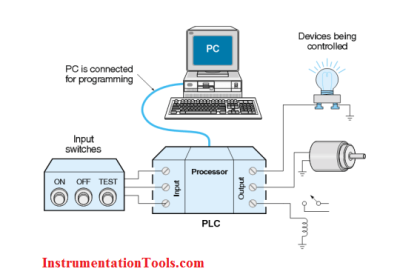
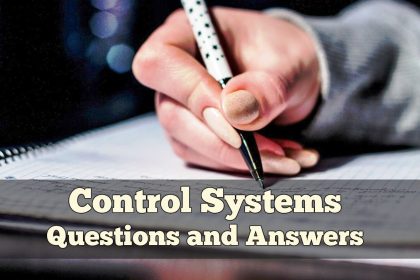
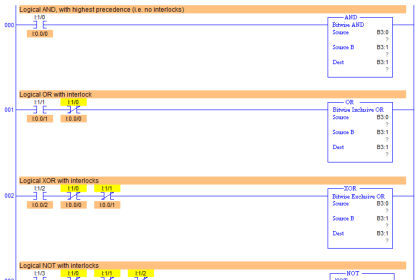

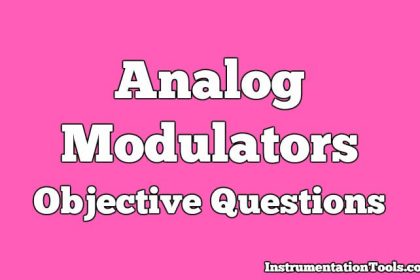

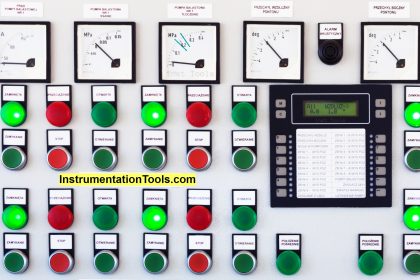

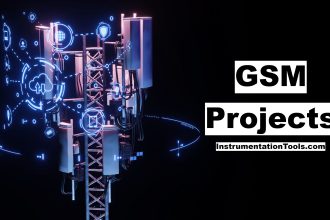

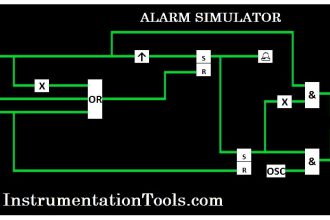
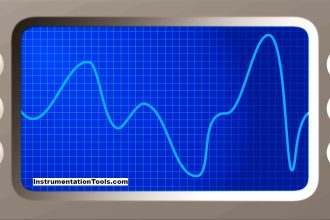


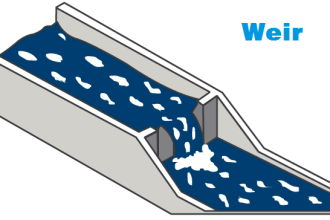

thanks..